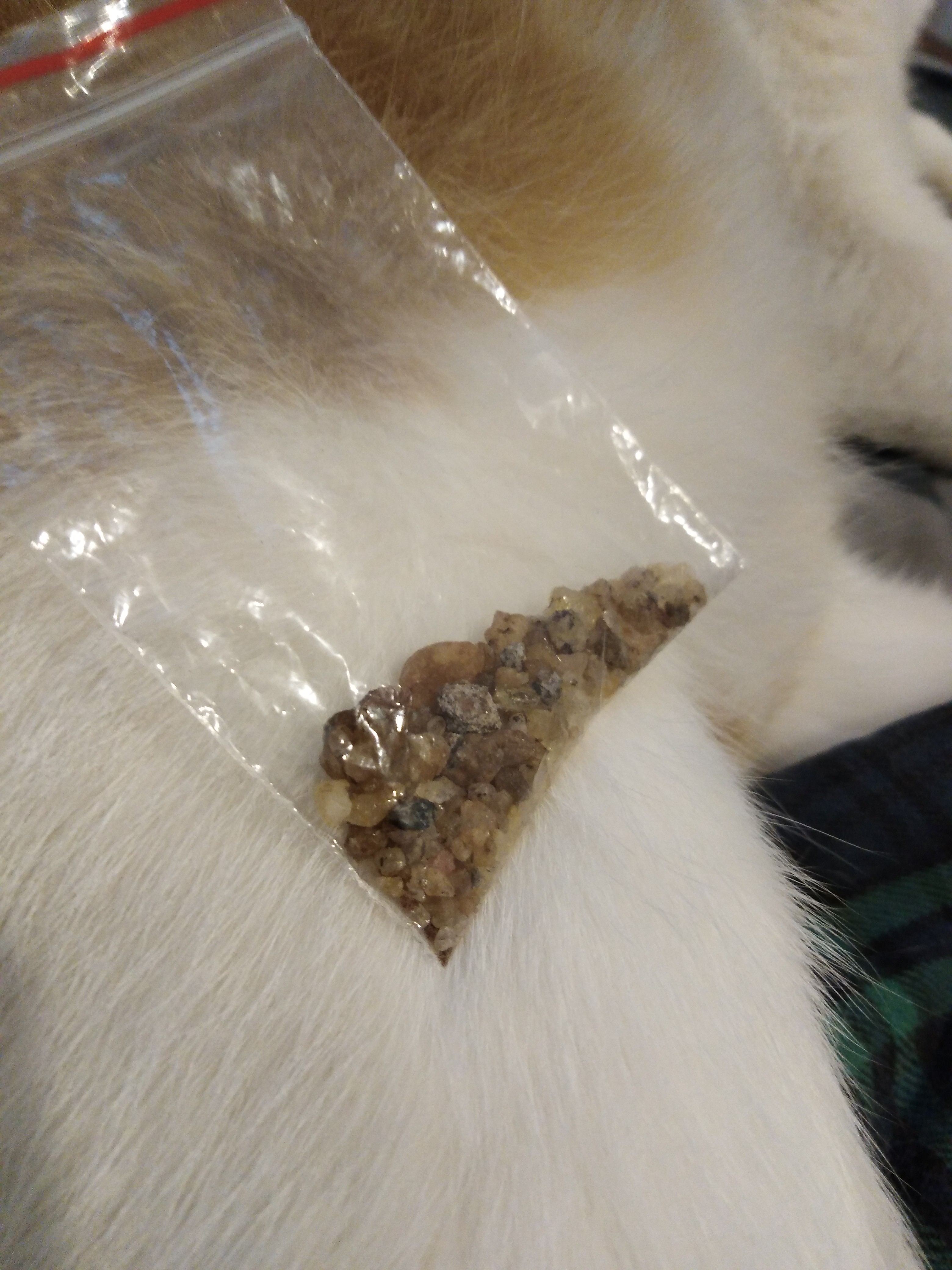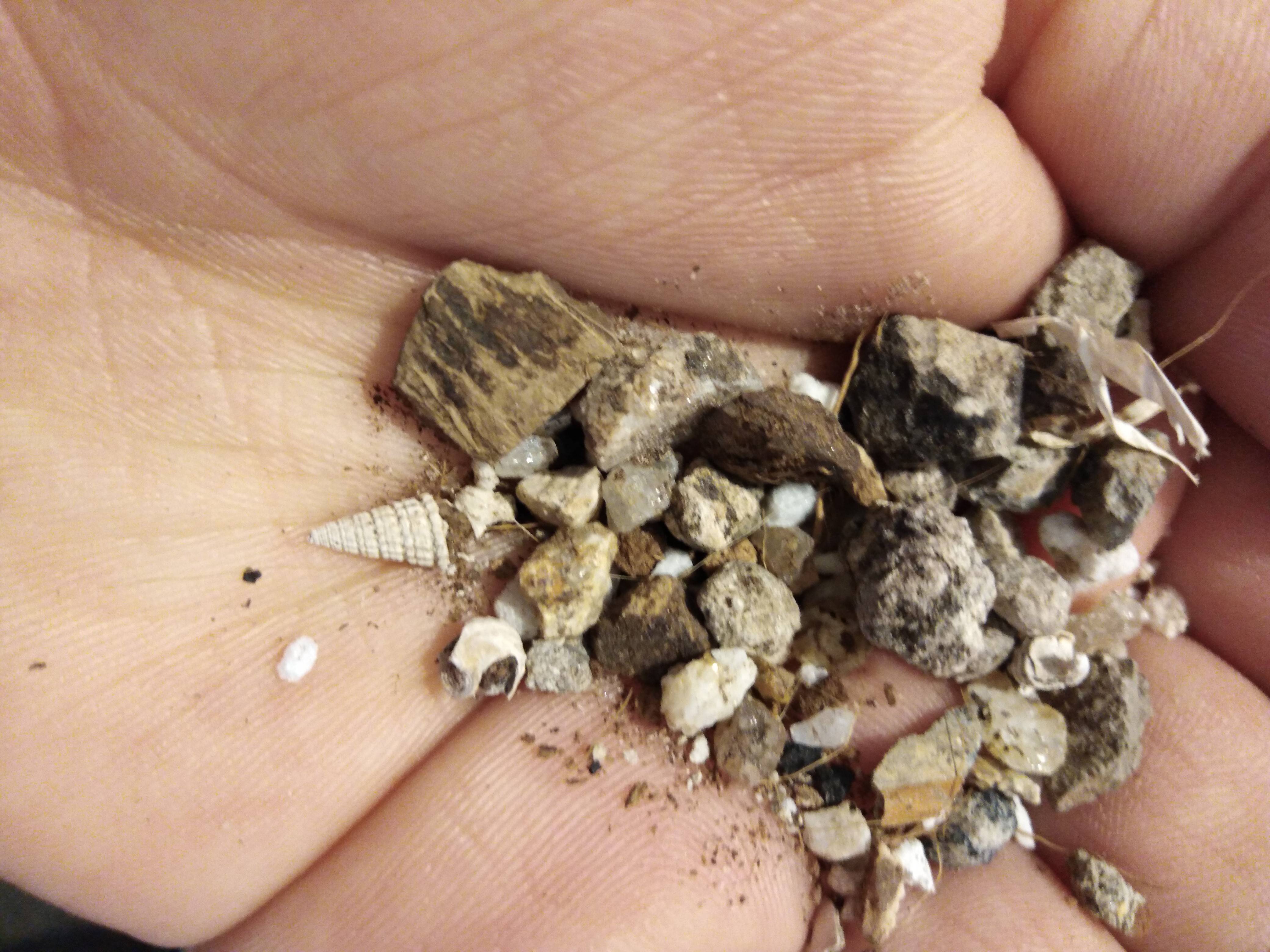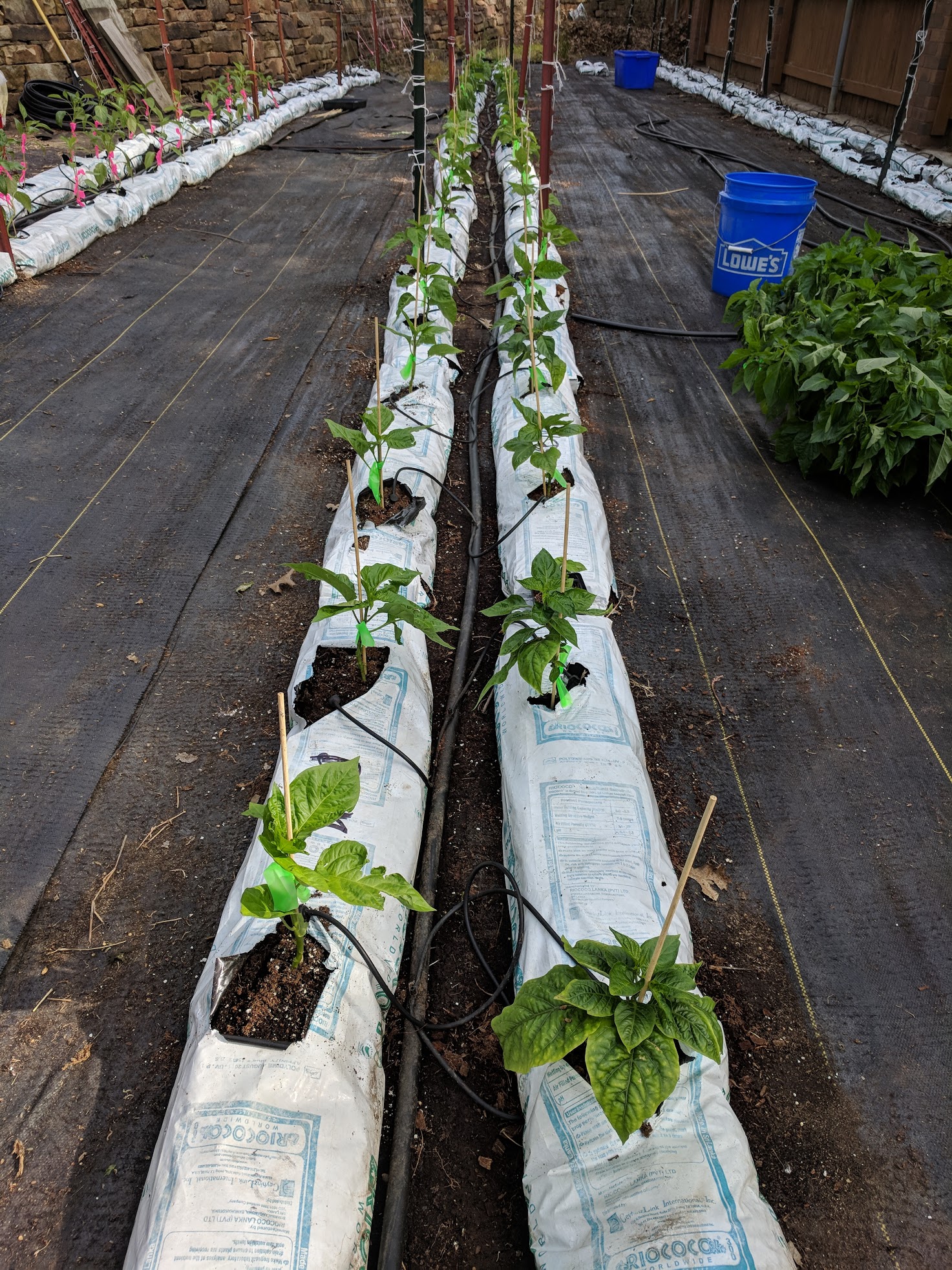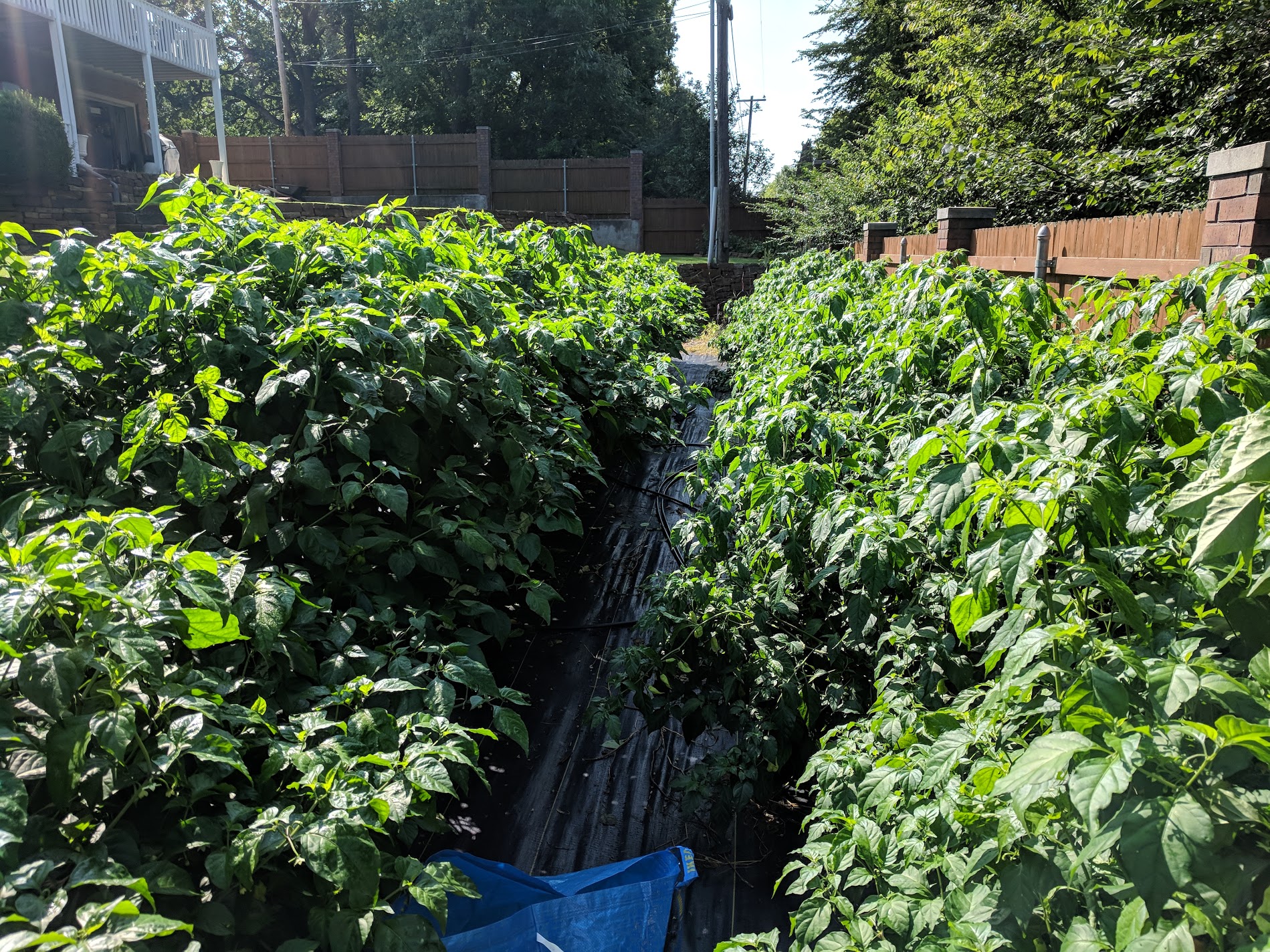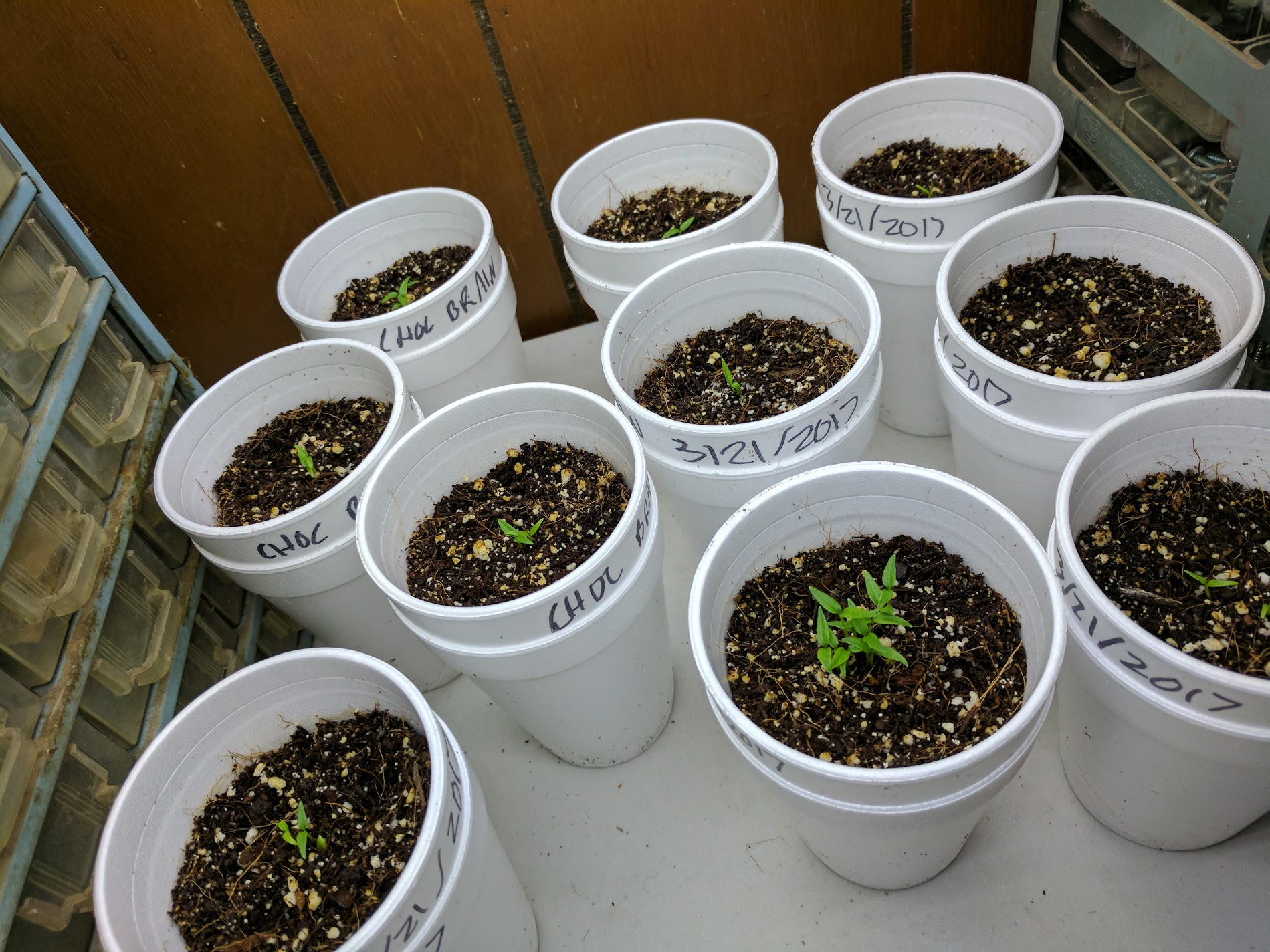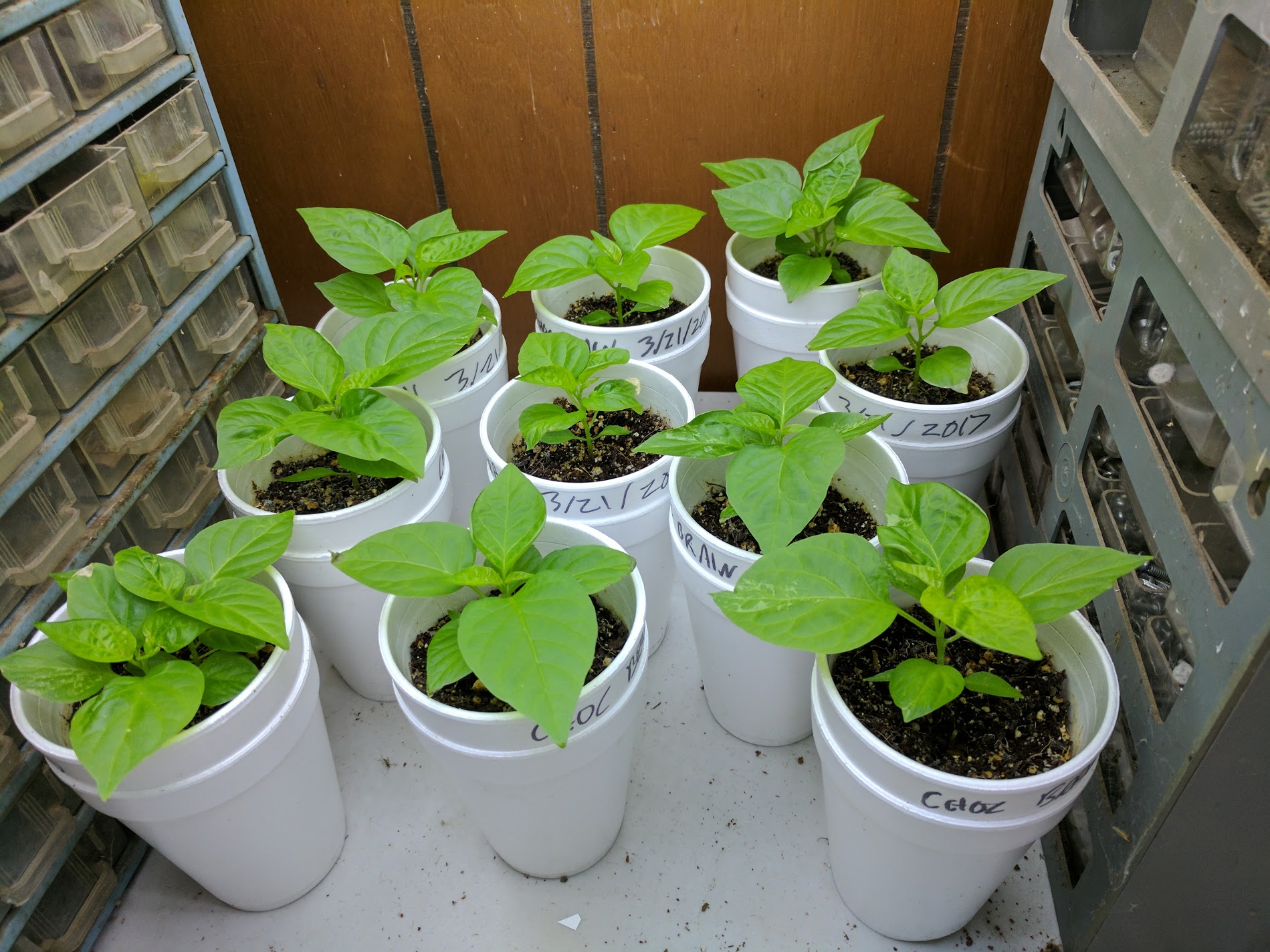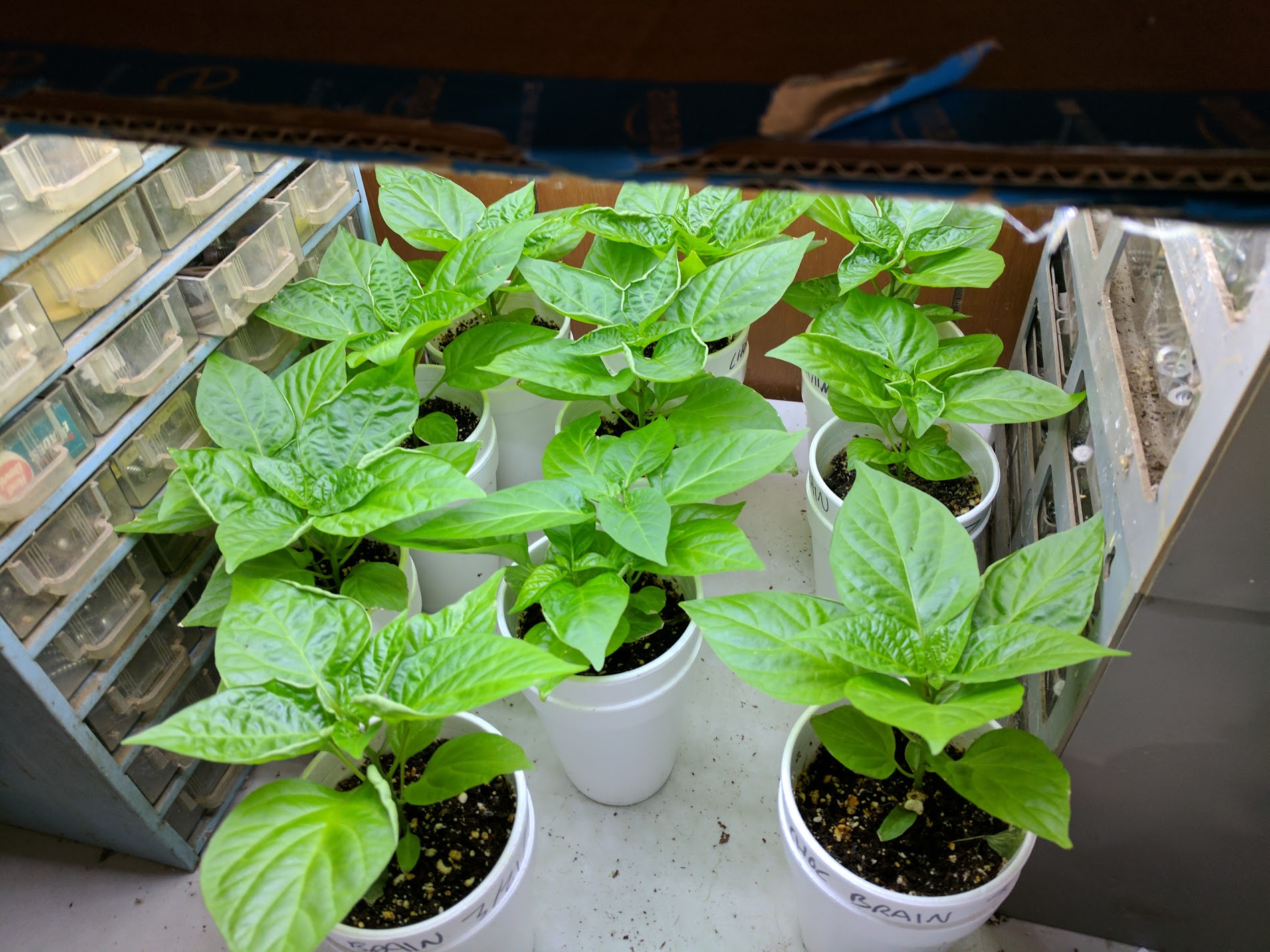I don't know much about this subject but hopefully we can learn something from sharing.
It seems like many posters in this thread have had great results and it would be beneficial if we could all share our experiences, results and knowledge to not only learn how to grow peppers better in coco coir but to continue advancing our collective knowledge about coco coir itself.
Inoks said:
How necessary IS that buffering? Never done that and never had problems? 3 seasons on coir already
What brand/type of coco coir did you use? Some comes pre-buffered/pre-charged and some doesn't. Depending on how much you trust the manufacturer you can buffer it again but if it is truly pre-charged then you don't need to.
I have started expanding my bricks with normal strength Cal Mag. After mixing with perlite and filling a container with the coco + perlite mix, I the flush container with double strength Cal Mag and wait for 24 hours. After 24 hours I will feed the container some full strength hydroponic nutrients, transplant my plant and then feed the container more nutrients until runoff (sometimes even more after runoff).
PtMD989 said:
I have no experience with coco, but I kinda remember TrentL saying you have to rinse the salt out of it before you use it. I think that was in his glog from 2018. Good luck [emoji106][emoji16]
Sent from my iPhone using Tapatalk
From what I can tell there are two types of salts people are referring to (I think).
The first type of salt
IS technically the second type of salt which I'll talk about soon. These "salts" are salts that you can see and are the type of salt that we would put on our food. They're chunks of salt. Presumably they're sea salt (sodium chloride/NaCl) but they
could be something else (who knows

).
You will find these in all types of coco coir (bagged, brick, pure coco, mixed coco/perlite, cheap and expensive).
Here are some that came from sieving 40 litres of expanded bricked canna coco (these are only the bigger chunks).
(My apologies the for photo quality).
This type of salt is present in all coco coir.
This is the visible form of salt you will find in coco coir. For what it's worth, flushing your coco with water will take a long time to remove this salt. Perhaps if you expand your coco brick with warm water it will dissolve them? Who knows.
Here are some things found while sieving other brands of coco (bagged, not bricked and not canna branded). I have no idea what half of this stuff is. The only components I can identify are perlite, salts, rocks and seashells (the seashells are neat, tbh.).
Forgive this following explanation, I did not study any form of science at school so I could be (and probably am) talking out of my butt here.
I encourage anyone reading this to do their own research and come to their own conclusions.
The second type of salts (as mentioned above) are what I assume people are referring to when saying coco coir needs to be flushed of "salts".
In chemistry, a salt is an electrically neutral compound which consists of a positive ion (cation) and a negative ion (anion).
NaCl (sodium chloride, sea salt - for example) consists Na+ (sodium cation, positive charge) and Cl- (chloride anion, negative charge).
It make sense that coco coir would contain sea salts, correct? It is grown by the sea, after all.
That explains the sodium chloride (NaCl) found in the coco.
Coconuts being grown by the sea somewhat explains the presence of these sea salts, anyway. although you could reasonably (and perhaps erroneously) assume the sodium chloride would have been washed away before the product was buffered. All of the brands coco coir I have sieved claim to have been both rinshed/washed and buffered.
What happens when we put salt into water? It will dissolve, right? The speed it dissolves at will vary depending on the temperature of the water.
Once the NaCl gets dissolved it is no longer a salt. It has now split into its ions (Na+ and Cl-).
I cannot provide citations (mainly due to laziness) for any of the above information but if anyone would like, I will find some. To the best of my knowledge the above is correct but please double check this to verify.
Okay this is where we get into science where the majority of the research actually comes from cannabis nutrient companies and cannabis growing forums.
If these claims and the information provided are not cited or backed up with verifiable evidence (which it isn't) how can we believe anything we read on this subject?.
Please read the sentence directly before this sentence and then read the previous bolded sentence above. Appreciate the irony. Hopefully you can see the point I'm trying to make here.
The answer (in my opinion) is that we can't believe the information provided by cannabis nutrient companies or posters from cannabis forums. We have to use critical thinking skills and make educated (or in my case, uneducated) guesses.
The following information comes from hydroponic nutrient manufactuers and cannabis growing forums and as such may be false.
Hydroponic nutrients manufacturers claim that un-buffered/un-charged and un-rinshed/ un-washed coco
can tend to be high in sodium (Na) and also potassium (K).
They also make the claim that coco coir in its un-buffered and un-rinshed state can be low in calcium (Ca) and magnesium (Ma).
Advanced nutrients also claim that coco needs extra iron (Fe) however their claim is in regard to iron being required in nutrients rather than in the buffering process. (They also claim that this was discovered by
"25 Ph.D.’s").
I need to stop typing and feed my plants so
here is a page where you can read more about this.
In theory you can actually flush the coco with R/O or de-ionised water (ideally pH'd within the same range you would feed your coco with hydroponic nutrients) and then take some of the run off and test the EC, PPM, TDS or CF. The run off may show the salt content. If you continue to flush the coco you will most likely observe the EC going down.
My question is, if one was to flush their pre-buffered/pre-charged coco-coir with ph'd R/O or de-ionised water, are they actually washing the buffer out? Perhaps the EC/TDS will go down but part of that reduction in salts is the buffer being washed out.
This is where our critical thinking brains come in.
Can we trust the assertions of companies that produce and sell coco coir (whether bagged or bricked, pure coco or mixed with perlite)?
I have yet to find an answer to this question. Probably, it will come down to each individual grower making their own decision about this.
After re-reading all of the above information I'm uncertain of the point I was trying to make here but will keep this section because it took a long time to type out and hopefully someone can refute some of the points made and more learning will happen  .
.
juanitos said:
if you hit it with a lot of nutes up front you will have buffered it anyway.
it is not like a never ending hole, eventually it will soak up enough cal/mg to be neutral again.
i just ran nutes through my coco the day before planting. seems to be fine?
Yes, I believe this is to be true (with a caveat). The caveat is that it is dependent on the coco coir you are using. There is a lot of discussion on cannabis growing forums about this and there is not really a definitive answer.
It depends on many factors, really, so it's not a simple subject.
The original coco coir will play a huge part (quality, buffer, rinse, salt content, the way it was processed).
The fertiliser you're using will play a huge part, too. Hydroponic companies that sell coco coir specific nutrients tend to have higher amounts of Ca and Mg. If the coco is properly buffered then an all in one like Dyna-Gro Foliage Pro will more than likely be perfect.
What if the coco is not buffered well enough? I have to do more research about this subject to find more answers..

